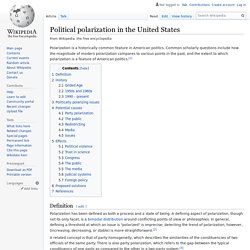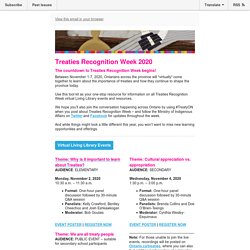

Newsela. Charts: America's Political Divide, From 1994–2017. Politics can be a hot button topic in America.

With rising tensions on both sides of the political spectrum, some claim that bipartisanship is dead. Recent research shows that may well be true. Today’s charts come from a report by the independent think tank Pew Research on the partisan divide between the two major U.S. political parties, Democrats and Republicans. The data is based on surveys of over 5,000 adults to gauge public sentiment, tracking the dramatic shifts in political polarization in the U.S. from 1994 to 2017. The results are a fascinating deep dive into America’s shifting political sentiment.
Over Two Decades of Differences The animation above demonstrates how the political divide by party has grown significantly and consistently over 23 years. By 2017, the divide had significantly shifted towards the two extremes of the consistently liberal/conservative scale. How have Americans’ feelings across major issues evolved over time? Google Trends.
Indigenous Peoples Terminology Guidelines. We’ve talked about the definition of Indigenous Peoples and the constitutional significance of Indigenous or Aboriginal.

In this article we drill down on guidelines for usage. Terms for Indigenous Peoples have evolved over time and are continuing to evolve. The First Peoples of this land now known as Canada formerly had unique communities with unique names - there wasn’t a need for collective nouns or complicated terminology. With European contact and ensuing colonization, the government required people to be defined and labeled for ease of governing.
Aboriginal Peoples The collective noun used in the Constitution Act 1982 and includes the Indian (or First Nations), Inuit and Metis Peoples so legally it will always have a place at the terminology table. Can: Use interchangeably with First PeoplesUse interchangeably with First NationsUse interchangeably with Indigenous Peoples Caution: First Nation(s) Indian There are categories of “Indian”: Indigenous Peoples Inuit Métis Peoples Native. Political Polarization in the United States. Polarization is a historically common feature in American politics.

Common scholarly questions include how the magnitude of modern polarization compares to various points in the past, and the extent to which polarization is a feature of American politics.[1] Definition[edit] Polarization has been defined as both a process and a state of being. A defining aspect of polarization, though not its only facet, is a bimodal distribution around conflicting points of view or philosophies. In general, defining a threshold at which an issue is "polarized" is imprecise; detecting the trend of polarization, however, (increasing, decreasing, or stable) is more straightforward.[2] A related concept is that of party homogeneity, which describes the similarities of the constituencies of two officials of the same party.
History[edit] Gilded Age[edit] 1950s and 1960s[edit] 1990 – present[edit] Families, in contrast, are becoming more politically homogenous. Politically polarizing issues[edit] Teaching Kids News. Teach and learn about treaties in Ontario / Enseignez et apprenez-en davantage sur les traités. Du 1er au 7 novembre 2020, les Ontariens de toute la province se réuniront virtuellement pour apprendre l’importance des traités et comment ils continuent à façonner la province aujourd’hui.

Utilisez cette boîte à outils comme votre guichet unique pour obtenir des informations sur tous les événements et ressources de la Bibliothèque vivante virtuelle de la Semaine de reconnaissance des traités. Nous espérons que vous vous joindrez également à la conversation qui se déroule dans tout l’Ontario en utilisant #TraitésON lorsque vous publiez des informations sur la Semaine de reconnaissance des traités - et que vous suivrez le ministère des Affaires autochtones sur Twitter et Facebook pour des mises à jour tout au long de la semaine. Et même si les choses ont l’air un peu différentes cette année, vous ne voudrez pas manquer les nouvelles occasions et offres d’apprentissage. Trump vs. Obama Economy.
US political system: How does it work? Senate, House of Representatives and more explained. The US Government is divided into three clearly defined branches – the president and his cabinet (the executive), the US Congress (the legislature) and the courts (the judiciary).

The separation of powers is designed to provide a system of checks and balances which prevent any individual or group from gaining too much control. What is the US Congress and how does it work? Like the British Parliament, the US Congress decides and makes the laws that govern America. It also has the power to impeach the President and remove them from office. The US Congress is made up of an upper chamber, known as the Senate, and a lower chamber known as the the House of Representatives. Both houses are based at the Capitol Building in Washington, DC. Americans will elect members to both houses as as well as electing a President and Vice President on the election day tomorrow.